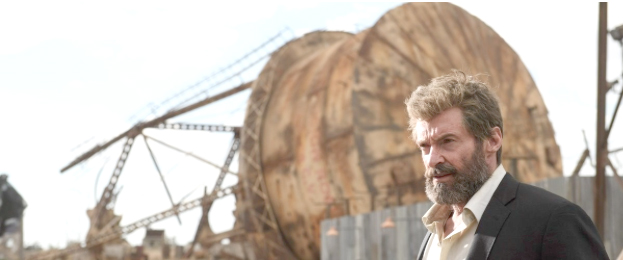
Movie watchers asked common questions surrounding the release of “Logan,” the final Wolverine movie for Hugh Jackman, who has played the role for 17 years. They asked: why is “Logan” titled “Logan?” Superman movies are not titled “Clark,” and Iron Man movies are not titled “Tony.” What makes “Logan” so different?
Set in the X-Men Universe in the year 2029, this story of Wolverine, where mutants are on the brink of extinction, tells a different story than a normal superhero film. Today, superhero and comic book movies frequently have sequels, many of which have been on screen almost a decade, like “Iron Man,” which first came out in 2008; however, in 2029, superheroes are no longer appreciated, or well-liked. No mutants have been born in some 25 years, and Wolverine (Hugh Jackman), living under the identity Logan, is, to their knowledge, the final mutant from the X-Men alive, and to answer the question posed above, “Logan” is a movie about the man behind the superhero identity. The film is about the person behind the mask, making it a personal, more relatable film for viewers.
There is a lot of information that needs to be understood going into this movie regarding X-Men lore and the history of all of the stories intertwined into “Logan.” Most importantly is that this film combines original and adapted aspects from two separate comics, “Wolverine: Old Man Logan” and the origin story of “X-23.” James Mangold, the director, and Hugh Jackman create a powerful, meaningful film for X-Men fanatics and casual moviegoers to both enjoy.
At the beginning of “Logan,” Logan is graying, drinking excessively, contemplating suicide. What may be most shocking is that street thugs, who we would normally deal with in seconds, can take him on, almost beating him. He is a broken shell of the man and superhero he once was. He lives along the United States-Mexico border caring for Professor Charles Xavier (Patrick Stewart), the mentor of the X-Men, and Caliban (Stephen Merchant). To their knowledge, they are the last mutants; however, the three of them learn that the company Transigen has been manufacturing child soldiers from many old mutants’ DNA, and Gabriela, a former worker for the company, brings Laura (Dafne Keen), one of the manufactured mutants to Logan, pleading to help the two of them escape the evil company. Despite the rage and despair flooding Logan’s life, and, as if his heart grew three sizes, he reluctantly agrees to help.
“Logan” proves to be the grown-up, final chapter to Hugh Jackman playing Wolverine. The character is allowed to be as berserk as fans have always wanted, and the R-Rating that “Logan” has allows James Mangold to do as he pleases with language, blood, and each aspect of the story. In previous Wolverine movies, the camera would pan away when things got bloody and Wolverine did not have nearly a colorful of language as he does in “Logan.” There is a sense of realism in that way, and also a peace for fanatics of Wolverine to see him at his most broken, most bare form. If he had not been a mutant, he may be relatable for many people attending the film. The carnage that Logan and Laura leave behind them are not to be cheered at, or to draw out a sense of happiness even. This film is Logan’s redemption at a disappointing life filled with rage and sadness, which he begins to unleash no more than three minutes into the movie. As a result of the blood and slice-and-dice effect Logan and Laura have on their adversaries, the violence may not be for the faint of heart, but also not overbearing.
“Logan” strays from a typical Marvel superhero movie in another significant way. In a typical superhero movie, CGI (computer-generated imagery) is used to obscene proportions to create special effects that top the previous film in the universe; however this is mostly nonexistent in “Logan,” and further humanizes the broken hero on screen. Camera angles are very close to the action, and throughout the film, audience members are drawn into the screen instead of being set apart from the action and effects. Instead of tripling their budget strictly for CGI, Mangold focuses on fight scenes, dialogue, and character development, notably between Logan and Professor Xavier. The connection between the characters on screen for the last time together brought many audience members to tears.
While “Logan” is Hugh Jackman’s final appearance in the mutton chops and claws, he has done tremendous work as one of comic books fan’s favorite superheroes. He appeared in nine movies, including three solo movies, over 17 years as Wolverine. “Logan” is an emotional farewell to a man who has put so much time into a single character. In this film, he shows the audience the old soul that Wolverine is, and portrayed the anger pent up behind the mask for almost two decades in a fulfilling end. In “Logan” he plays the roles of father, son, friend, and adversary all while battling against time and his age, and his own demons, creating the most relatable, and most important superhero movie in some time. He has spent his career developing a grown-up character among Professor Xavier’s Island of Misfit Mutants, but finally shows the grizzled lone wolf that the Wolverine is.
“Logan” deconstructs the superhero movie in a way that will challenge the genre moving forward, and potentially change the way that the DC and Marvel Comic Universes move forward. It will be difficult to put superhero movies back together again.

